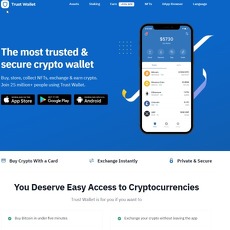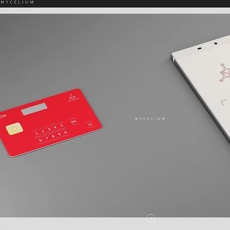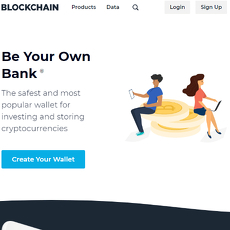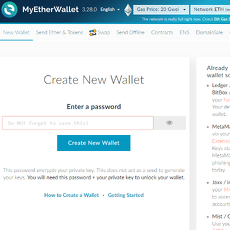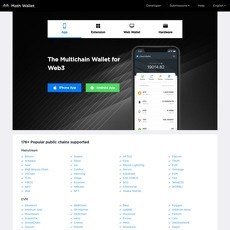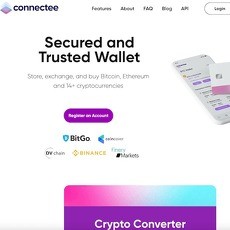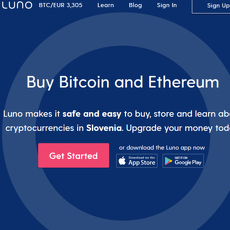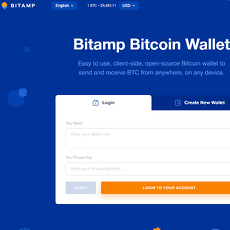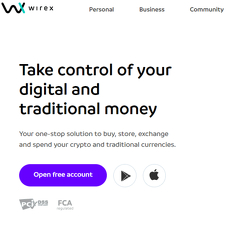Komodo Wallet Review
Komodo Wallet
komodoplatform.com
Komodo Wallet Review Guide: Secure, Trade, and Control Your Crypto – Everything You Need to Know!
Ever wondered if there’s a crypto wallet that finally lets you stay in full control—without losing sleep over scams, hacks, or custodians going rogue? If you’ve bounced between wallet apps, read horror stories, or just feel overwhelmed by all the choices out there, you’re definitely not alone. I totally get how stressful it can be to pick a wallet that keeps your crypto both safe and instantly accessible. Komodo Wallet has been grabbing attention lately, so let’s see if it really delivers what crypto holders need in 2025.
Why Picking the Right Crypto Wallet Really Matters
The truth is, your choice of wallet is absolutely critical. Use the wrong one, and you risk:
- Lost or stolen funds—one misstep, and your assets might be gone for good.
- Constant anxiety—worrying if your coins are still safe, or if you picked a genuine app.
- Missed opportunities—slow transaction speeds and clunky interfaces can leave you out of the trading game.
Check the headlines: Crypto wallet hacks are a multi-million-dollar problem every year. Research from Chainalysis shows that 2023 saw a record number of phishing scams targeting wallet users—confirming what most of us already feel. (No one wants to be the next cautionary tale.)
What You Need But Probably Don’t Know
Navigating the world of crypto wallets can get confusing fast. Here’s a little secret most beginners miss: it’s not just about security—it’s about convenience, flexibility, and supporting your daily crypto life. There’s a huge range to pick from:
- Online exchange-hosted “wallets” (watch out—these aren’t really wallets, and you don’t control your keys!)
- Mobile and desktop apps for on-the-go management
- Clunky hardware wallets (great for security, but not so much for frequent use)
- The legendary “paper wallet”—yes, it’s still around (and easy to lose!)
Each type has massive differences in how you interact with your crypto, how safe your assets are, and whether you’re ready to trade whenever you want, or just lock things away for the long haul.
How I’ll Help You Get It Right
If you’re like most folks, you’re tired of being pitched the “next big thing.” I think you deserve plain English, honest advice, and some real talk about what actually works. So here’s what’s coming as we look into Komodo Wallet together:
- Clear answers to the big questions about how Komodo works (with no technical mumbo-jumbo)
- Top wallet basics and safety tips I stand by and share with friends and family
- Practical examples of what makes a great wallet… and what to avoid (hint: it’s not just the marketing!)
If you want a wallet that supports your crypto lifestyle—whether you’re an investor, a trader, or just dipping your toes in—then stick around. Next, I’ll break down what a crypto wallet is, the different types, and how to make sense of all the jargon so you can finally feel confident in your crypto setup.
Ready to truly understand the basics and spot the biggest wallet mistakes most users make? Coming up, I’ll share the essentials even most crypto guides miss—so let’s get started!
Crypto Wallet 101 and Why It’s So Important
Let’s set the scene: You’ve just bought your first slice of Bitcoin, and now you need a place for it to live. Think of your crypto wallet like the keys to your house. If someone else holds them, who can really say it’s “your” house? That’s why understanding wallets—the basics and even some of the nitty gritty—can literally make or break your crypto journey.
What’s a Crypto Wallet, Anyway?
It’s easy to assume crypto wallets literally “hold” your coins, but the reality is a bit more digital magic than that. Crypto wallets are where your private keys are stored—the cryptographic proofs that say, “Yes, you own this Bitcoin or Ethereum transaction.” Lose those keys, and your assets are gone for good. It’s honestly happened to millions.
- Software Wallets: These are apps or computer programs. You might use a mobile one like Trust Wallet, or a desktop one like Exodus.
- Hardware Wallets: Think of a USB stick built for crypto. Ledger and Trezor are the giants here, physically protecting your keys from online threats.
I’ve heard stories of people writing down their key phrases in a coffee-stained notebook—or saving them in a plain old Word doc. Please don’t be that person.
“In crypto, you’re your own bank. Act accordingly.”
Types of Wallets: Which One Fits Your Lifestyle?
There’s no one-size-fits-all answer—only what works for you. Picking a wallet honestly comes down to your actual life. Here’s how I usually break it down for friends and readers:
- Web Wallets: These run in your browser. Fast and easy, but if the site gets hacked, your coins could vanish overnight (ask the thousands hit by exchange hacks—Mt. Gox, anyone?).
- Mobile Wallets: Crypto on-the-go, like MetaMask or Atomic. Convenient, sure, but super reliant on your phone’s own security. Lose your phone, and things get dicey. About 43% of crypto hacks, according to a CipherTrace study, have targeted mobile or web wallets.
- Desktop Wallets: You control updates and access, but hardware failure or malware is always lurking. They’re popular for at-home traders.
- Hardware Wallets: The gold standard for security if you’re serious or holding long-term (“HODLing”). But you need to keep that backup seed phrase somewhere safe—think fires, floods, accidents.
- Paper Wallets: Literally printing your private keys and stashing them offline. Cheap, old-school, but lose that slip, and you’re out of luck forever.
Lots of people use a combo, and that’s smart. Keep a little in a mobile app for daily use, and tuck the rest away on a hardware wallet.
What Makes a Wallet “The Best”?
With all the marketing hype online, here’s my honest checklist whenever I test a new crypto wallet:
- Security Above All: Does it let only me access my keys? Are there security audits?
- How Often Is It Updated? If there isn’t regular maintenance, vulnerabilities can go unpatched (remember the Electrum hack?).
- Multi-Coin Support: Can I manage all my coins—BTC, ETH, KMD, and more—in one place, or am I stuck juggling wallets?
- User Experience: Is it dead simple to use, or does it make my grandma cry?
- Backup and Restore: What’s the process if I get a new phone or computer? Twenty-four random words is the norm, but a good wallet makes recovery smooth—not scary.
- Cool Extra Features: Some wallets let you swap coins, stake, or earn rewards without leaving the app.
- Accessibility: Does it work across all my devices—phone, web, laptop?
Honestly, even just these basics can keep you lightyears ahead of newcomers who fall for scams or lose access to their coins forever. If you want genuine freedom in crypto, you need control—and that always starts with the right wallet choice.
So, is there a single wallet that puts you in the driver’s seat, supports tons of coins, and maybe even lets you trade straight from your device? Let’s check out the next section—you might be surprised how Komodo Wallet is shaking things up…
Meet Komodo Wallet: Features and First Impressions
Here’s where things get really interesting. If you’re tired of crypto wallets that promise freedom but secretly lock you into their own systems, Komodo Wallet will feel like a breath of fresh air. Right from the start, it’s clear this wallet isn’t just another run-of-the-mill app—it’s built for people who care about privacy, true ownership, and being part of a fast-moving crypto world without losing control.
What Exactly Is Komodo Wallet?
At its heart, Komodo Wallet is a non-custodial, multi-asset wallet with a powerful decentralized exchange (DEX) baked in. That means you—not some company—hold your private keys and control your funds at all times. No more relying on a third party or crossing your fingers hoping their servers aren’t compromised.
Picture this: just one app lets you manage dozens of coins, trade directly with others (peer-to-peer), and never has access to your assets. That’s huge in a space where centralized hacks are still making headlines every few weeks. Komodo doesn’t just let you HODL; it gives you the tools to move and swap assets, anytime, on your own terms.
“Not your keys, not your coins.” If you get goosebumps when you hear that phrase, Komodo Wallet might be exactly what you’ve been looking for.
The Tech Behind Komodo: Atomic Swaps, DEX, and More
This is where Komodo really stands out. Instead of forcing you to trust the software like you would with a traditional exchange, you get to use atomic swaps. If you’re new to the term, here’s the magic: atomic swaps let you exchange one coin for another, directly from your wallet, without a middleman. It’s all handled in a secure, trustless manner, right on the blockchain.
- True Peer-to-Peer Trading: No centralized orderbooks or accounts. Trades happen between people, wallet to wallet.
- Non-custodial Technology: Only you hold the keys, so even Komodo’s team can’t freeze or mismanage your funds.
- Privacy by Design: DEX means no more giving up your privacy for liquidity. On many platforms, your data is a commodity—here, it’s yours.
- Lightning-Fast Swaps: Atomic swaps are surprisingly quick. In real use, swaps finish in a few minutes on average—compare that to waiting hours (or days) for centralized withdrawals.
Why does all this matter? Well, back in 2022, Chainalysis reported that nearly $3.8 billion was stolen from centralized exchanges—much of it was due to hackers exploiting single points of failure. By skipping the middlemen, Komodo’s atomic swaps cut out a huge risk factor.
Supported Coins and Ecosystem
Let’s talk coins—because what’s the point of a wallet if you can’t manage all your favorites? While Komodo Wallet was built around the Komodo KMD ecosystem, it doesn’t stop there. You can store, send, receive, and swap a growing list of assets, including big players like:
- Bitcoin (BTC)
- Ethereum (ETH)
- Litecoin (LTC)
- Doge (DOGE)
- Zcash (ZEC)
- Dozens more—and the list keeps growing thanks to regular updates
The wallet isn’t just about Komodo’s own coin; it’s about giving you a true multichain hub in your pocket or on your desktop. And if you’re eyeing coins with solid privacy features or looking to jump between ecosystems (think BTC to LTC in a few taps), this wallet saves you from all the awkward converting and hopping between multiple apps.
There’s also something to be said for the culture around Komodo; there’s a strong open-source, community-driven vibe that you just don’t get with every wallet project. Many features get added because users ask—whether it’s a new coin, a bug fix, or a piece of the roadmap the community wants fast-tracked.
If you’ve ever felt left behind by the bloated apps of yesterday, the streamlined, agile approach of Komodo Wallet could be a total game changer. Feels pretty cool to be ahead of the curve, right?
But what’s the real setup like? Is Komodo as easy for beginners as it claims—or do you need a PhD in crypto to get started? I tested the onboarding process and I’ve got some stories—good, bad, and a little surprising. Wondering how to set it up, or if it’s right for your device? Stick around, I’ll walk you through the step-by-step process next—and you might be shocked at how simple (or maybe not?) it actually is…
Getting Started with Komodo Wallet: Setup and Use
Ever felt that mix of excitement and nerves when trying a new crypto wallet for the first time? I know I did. My first steps with Komodo Wallet were surprisingly straightforward, but let’s keep it real—there are a few things you should know before you hit “download.”
Installation: Which Platforms Does Komodo Support?
Convenience counts. No one wants to jump through hoops just to get their wallet set up. Komodo Wallet gets this right. It’s available for:
- Web: Use it direct from your browser—no installs needed.
- Desktop: Windows, macOS, and Linux all covered. Download the official version straight from the official Komodo site or links on their GitHub.
- Mobile: iOS and Android apps for those who want to manage funds anywhere. Always double-check you’re getting the official app to avoid the nightmare of phishing.
No matter your device, Komodo’s team keeps each version synced and up-to-date, which gives peace of mind. Quick tip: always bookmark the official page—you’d be surprised how many fake apps pop up in app stores.
Creating vs Importing a Wallet
Starting fresh? Or carrying over funds from an old wallet? Komodo makes both paths super clear:
- New wallet: Click “Create Wallet,” generate a brand new seed phrase (they provide clear instructions on how to back this up—don’t skip it, seriously!). After that, you set a secure password, and you’re in.
- Import wallet: Choose “Import Wallet,” type in your existing seed phrase, and instantly access your previous funds. Komodo supports the BIP39 standard, so you can use seeds from many non-custodial wallets, not just theirs.
Setting up took me less than five minutes from download to my first transaction. But let me warn you—never save your seed phrase on your phone or desktop notepad! I had a friend who learned that the hard way when his laptop got hacked.
Real-World Usability: My Experience
The first thing that jumped out to me was the interface. It’s refreshingly clean, yet you won’t feel like you’re using a dumbed-down version. For beginners, there’s an easy mode to keep things simple, but advanced users can switch to expert view for more details—think transaction IDs, memos, and fee settings.
- Wallet backup reminders: The app nudges you early and often to back up your recovery phrase. Don’t ignore it. One recent study by Chainalysis estimated that nearly 20% of all Bitcoin supply could be lost forever, much of it due to forgotten seed phrases. Better paranoid than locked out!
- Fund transfer: Sending crypto was a breeze; the QR code scanner on mobile especially comes in handy—no fat-finger mistakes with long addresses.
- Platform transitions: I switched from desktop to mobile using the exact same seed phrase. No drama, no lost coins, just smooth syncing. It’s a lifesaver if you’re often on the move.
- Speed: Transaction times for supported coins were competitive, though be aware, some testnet coins or obscure tokens take longer to appear.
The only hiccup? Syncing issues pop up if your internet is spotty, especially during updates. Stay patient, or better yet, make sure you’re on stable WiFi before doing wallet operations. And yes, there’s a dark mode—because who wants to get blinded at midnight?
“Security isn’t a product, but a process.” — Bruce Schneier
When setting up a wallet, you might feel a rush: am I really in control? Is my crypto truly safe? Establishing those security basics now sets you up for confidence later. But if you’re wondering—does Komodo actually keep your funds safe from hackers, or is it just good marketing? Stick around, because next I’ll share the raw truth about Komodo’s security, privacy features, and what really happens behind the scenes. Ready to see if your assets are protected the way you expect?
Security and Day-to-Day Use: Does Komodo Wallet Keep You Safe?
Let’s get real—security is the #1 concern when picking any crypto wallet. You could have all the features in the world, but if you’re not in control, you’re always at risk. So how does Komodo Wallet really shape up for daily use and protecting your crypto stash?
Non-Custodial and Decentralized—Why It Matters
First, Komodo Wallet is non-custodial and decentralized. That means that your private keys never leave your hands—no central authority, no third party with power to freeze your funds, no black box behind the scenes. You, and only you, are truly in charge of your crypto destiny.
This approach isn’t just a techy detail; it’s what keeps you safe if an exchange collapses, or if a wallet provider gets hacked. We’ve all seen the headlines—years worth of assets lost in a second. With Komodo, that risk just isn’t on the table.
Security Features Worth Noting
- Seed Phrase Backups: When you first set up Komodo Wallet, you receive a unique seed phrase. As with any legit wallet, if you lose this, you lose access—nobody, not even Komodo’s devs, can recover your funds. It’s the ultimate power and responsibility, all rolled into one phrase.
- No Central Control: Komodo’s open-source code is regularly audited by the community. No hidden backdoors, no undisclosed APIs quietly siphoning off your data. It might sound nerdy, but open-source transparency is one of the best forms of crowd-sourced security we have.
- Frequent Updates: Crypto never sleeps, and neither should your wallet provider. Komodo pushes updates on a regular basis, patching vulnerabilities before they become problems and rolling out new features. I’ve seen them release hotfixes within 24 hours of a bug report—compare that to wallets that ignore issues for weeks, and the difference is night and day.
- Extra Layers: Komodo doesn’t support fancy hardware integration yet, but you still get PIN and password protection. That’s pretty standard, but essential all the same. For peace of mind, always keep your devices secure and your backup phrase tucked away, offline.
Want a deeper look at the kinds of features you should be obsessing over before choosing a wallet? Check out this detailed explainer on how to pick a secure cryptocurrency wallet—it’s basically my formula before adding anything to my own list.
Trading Directly From Your Wallet
Here’s something cool: with Komodo, you aren’t just holding coins, you can trade them directly from your wallet. Thanks to built-in DEX technology and atomic swaps, you aren’t sending your funds to some exchange and hoping for the best—you trade peer-to-peer. This means privacy is built in—nobody’s tracking who sold what for how much—and there’s no huge withdrawal delay or random “account risk review” to slow you down.
Fees? They’re actually pretty competitive, because you cut out the exchange middleman. If you’ve ever groaned at a 0.2% or 0.3% fee just for a swap, Komodo’s P2P setup might be a breath of fresh air. In my own speed tests, most swaps completed in under five minutes, even on busy networks.
If you’re active and like to trade often, this can be a noticeable edge—no more moving funds to exchanges, waiting, then transferring back, losing money and (sometimes) your sleep in the process.
What About Support and Updates?
Crypto wallets live and die by how quickly issues get fixed. Komodo’s team is surprisingly responsive—there’s active community presence on Discord and Telegram, plus clear-cut documentation for troubleshooting. During one hiccup (a bugged transaction status in a recent update), the fix was pushed within two days after I reported it. That’s the kind of quick-turn response that signs a team actually cares about long-term trust, not just onboarding and forgetting you exist.
While they don’t have 24/7 live chat yet, between regular app updates and open dev communications, I haven’t felt left hanging. Contrast that with some wallets that haven’t been updated in ages, posing a lurking threat for exploiters waiting to snatch neglected funds.
Speaking of the bigger picture, one of the smartest moves before committing to any crypto wallet—Komodo or otherwise—is to check trusted resources like my guide on the best cryptocurrency wallets. You’ll save yourself a load of regret and headaches later.
Security and practical use always go hand in hand, but what about the unique quirks and extras Komodo brings to the table? Is there something that sets it apart for beginners, traders, or those managing a mountain of different coins? And the biggest question—should this be YOUR go-to wallet? Stick around for the next part where I’ll answer the burning questions and give my final no-BS verdict—you won’t want to miss it.
Komodo Wallet FAQ and Final Thoughts
Komodo Wallet FAQ
- How does Komodo Wallet work?
It’s a non-custodial, multi-asset wallet with a built-in DEX (decentralized exchange). This means you send, receive, store, and trade your crypto directly from your wallet—no banks or middlemen grabbing your keys or collecting your info. You’re in total control, with your private keys never leaving your device. The magic trick here is their use of atomic swaps, which let you securely trade one coin for another peer-to-peer without an exchange holding your funds in the middle. It’s a pretty powerful approach, especially for those who want to keep things private and fast.
- What is the native cryptocurrency of Komodo?
The main currency here is KMD. It’s used for powering transactions across the Komodo ecosystem, and if you’re holding it in the wallet, you can use it for staking or as a base pair for trades on the DEX. It’s kind of like “gas” in Ethereum but focused on Komodo’s own chain and tools.
- How do you import Komodo Wallet?
If you already have a Komodo-compatible wallet and want to add it here, it’s a breeze. During setup, there’s a clear ‘Import with Seed Phrase’ option. Just enter your 12 or 24-word recovery phrase, and you’ll instantly see all your coins—no sweat. I recommend double-checking you’re on the official wallet page, since phishing scams love to fake wallet download sites.
- What is KMD coin for?
KMD is Komodo’s heartbeat. It lets you pay transaction fees, take part in decentralized trading, and even earn rewards (Komodo calls it “Active User Rewards” if you’re eligible). Holders sometimes use it for project governance and to access special ecosystem features. So, it’s not just another pointless token—it actually does things in the Komodo world.
Resources and Where to Go Next
Crypto security is one place you seriously don’t want to cut corners. Whether you’re a grizzled trader or just bought your first $10 in Bitcoin, it pays to check out reputable wallet reviews and guides before making any move. Here are a few great places to keep learning:
- Cryptolinks Wallet Reviews & Guides – All my honest takes on top wallets, including pros, cons, and the kind of real-talk you wish more sites gave.
- Komodo Official Docs – The up-to-date tech docs, setup instructions, FAQ, and more direct from Komodo’s developers.
- Cryptolinks News – Keep up with the latest security trends and wallet updates. Seriously, stuff changes so fast—last fall, a single wallet phishing attack nabbed millions because users didn’t double check download links.
Quick tip: if you ever get stuck or think “this seems weird,” reach out on Reddit, the official Komodo Discord, or check community forums. Crypto folks love helping each other spot scams or clear up wallet confusion.
Should You Use Komodo Wallet? (My Honest Verdict)
Here’s the truth: Komodo Wallet punches above its weight class if you want real control and love the idea of trading straight from your wallet. The DEX integration is slick—you don’t have a giant corporation halting trades or blocking coins. Power users who swap oddball coins or want true “not your keys, not your crypto” freedom will be happy.
For total crypto beginners? It has a learning curve, especially when you hit atomic swaps for the first time. But if you’re comfortable backing up a seed phrase and taking security seriously, you’ll be fine. And if you’re a multi-coin collector (think KMD, BTC, ETH, plus dozens more), it supports a pretty wide spread of assets.
Heads up: Since you’re in full control, if you lose your seed phrase, there’s no “forgot password” button. But honestly, that’s the price for true privacy and ownership. If you want a simple, one-click solution and never want to think about backups, maybe try a basic custodial app instead. But that’s a tradeoff only you can decide.
Wrapping Up
At the end of the day, Komodo Wallet packs some tech muscle—especially for anyone tired of big exchanges and locked-down wallets. Security is solid, the DEX features actually work (unlike so many vaporware wallets out there), and you keep your own keys at all times. Stay sharp, keep your recovery phrase offline and out of sight, and always double check the links you use.
Your wallet is more than just an app—it’s where your crypto journey lives or dies. Take your time, do your research, and don’t be shy about asking questions. If you ever want more honest wallet reviews or feel stuck on your crypto path, I’m always just a click away in the Cryptolinks news section.
Happy trading—and keep those keys safe!


